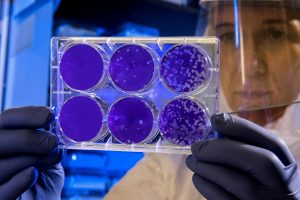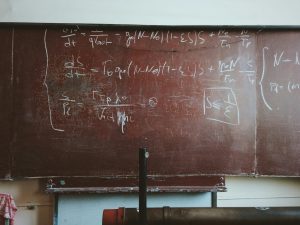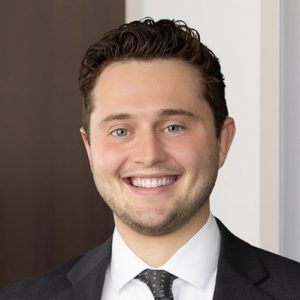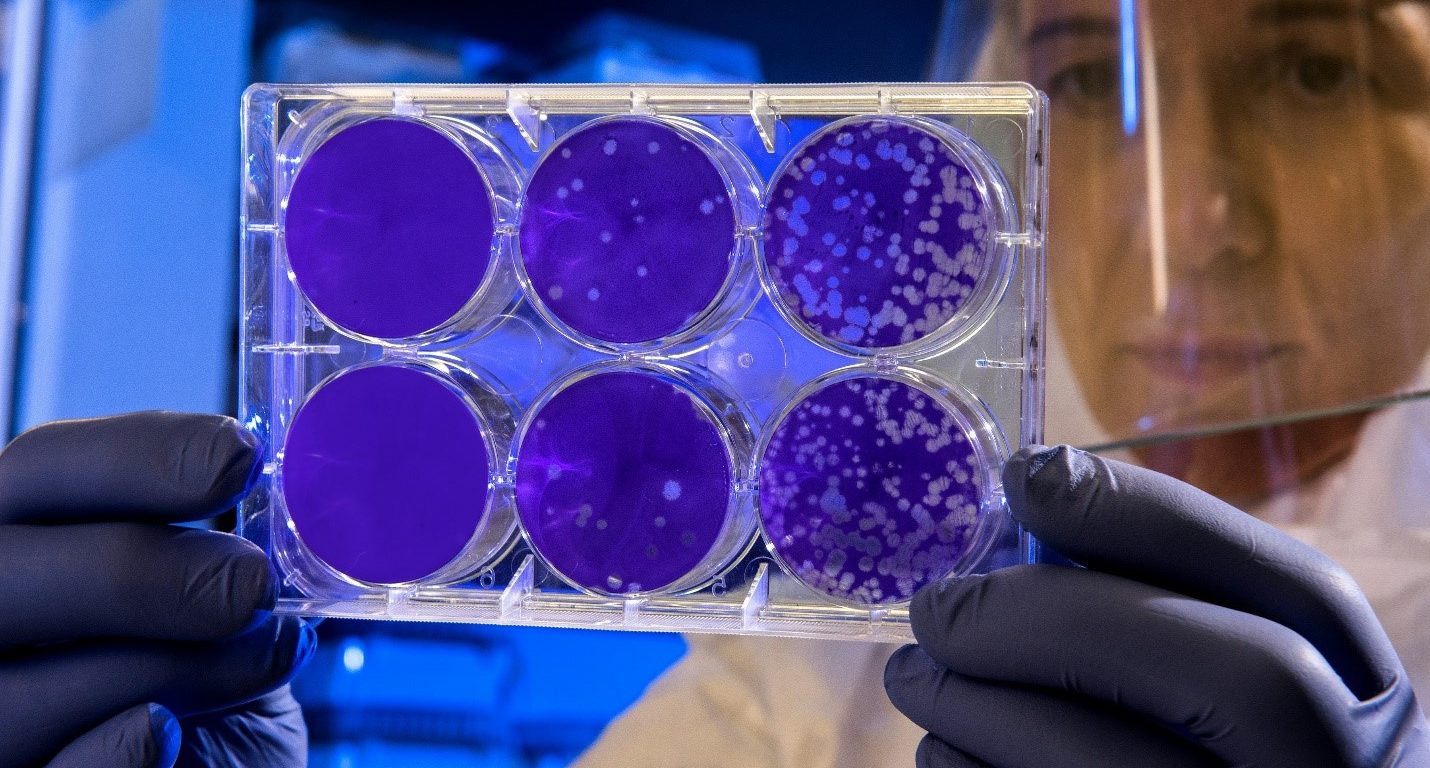I can’t be the only one who’s experienced this scenario. You’re surrounded by your friends and one of them thinks of an invention that solves a frustrating problem in daily life. Then, one of your friends exclaims: “You should patent that!” As the discussion progresses, the euphoria of potential financial freedom sets in. If only we could commercially exploit this idea, then we’d be financially free–released from our student loan burdens and other debts. Hold on. Before you and your friends liquidate all your assets, apply for a patent (i.e., a time-limited exclusive right to your invention), and book an audition on Shark Tank, let’s go through a few things.
Typically, what’s imagined or created is an application of a scientific principle, which can be patented. Take, for example, the Scrubb Daddy® sponge that cleans spoons better than previous sponges due to its advantageous texture adaptation and, obviously, its curved smile. In this situation, although the sponge requires the laws of physics to function properly (e.g., to spring back out), the inventor likely didn’t try to patent a law of physics. However, you may be wondering, what if I discover a new scientific theory? Could anyone actually patent that? Let’s start by considering what is patentable subject matter.
Patentable Subject Matter 101
First, let’s look at the official statutory language about what is patentable subject matter (i.e., one of the statutory requirements detailing what is required from an inventor to obtain a patent). The language currently in 35 U.S.C. § 101 detailing what can be patented, has changed little since the U.S. Patent Act of 1793. This section states that, “[w]hoever invents or discovers any new and useful process, machine, manufacture, or composition of matter, or any new and useful improvement thereof, may obtain a patent therefor, subject to the conditions and requirements of this title.” Although this section specifies what can be patented, the Supreme Court has held that § 101 also includes an implicit exception of what cannot be patented. As outlined in Alice Corp. v. CLS Bank International, the Court emphasized that, “[w]e have long held that [§ 101] contains an important implicit exception: Laws of nature, natural phenomena, and abstract ideas are not patentable.” But, what really are laws of nature, natural phenomena, and abstract ideas? Let’s explore some of these below.
Natural Phenomenon – Products of Nature
Natural phenomenon alone, which include products of nature, are barred under § 101 as being unpatentable. Some examples of products of nature include isolated DNA, a cloned animal, and a natural mineral. One specific example to further delve into this exception is the discovery of penicillin. As the story goes, Dr. Fleming, a U.K. microbiologist discovered a strain of mold contaminating his petri dishes that were previously colonized with Staphylococci bacteria. To his surprise, the mold secretions not only inhibited the bacterial growth, but also killed different bacteria. He subsequently isolated penicillin, and this became the first commercially available antibiotic that saved countless lives.

Photo by the CDC, licensed under Unsplash.
Assuming Dr. Flemming discovered penicillin today, could that invention be patentable? Probably not. It would likely be barred under § 101 as being directed to unpatentable subject matter–a product of nature. Why? To explain, I propose a hypothetical patent claim for penicillin below, because patentability is assessed by evaluating individual patent claims, rather than topics or ideas.
For those that are unfamiliar, a patent claim defines the invention which is used to assess patentability (and if a patent is granted, this provides a boundary for the inventor’s exclusive right). A good analogy is that a patent claim mirrors a fence in field, where the area within the fence corresponds with the patent claim, and the field is the technological landscape (i.e., the inventor only receives protection within the fence and does not receive protection outside the fence). In practice, patents typically have many claims, multiple fences with various ways of overlapping each other. But, for simplicity, we’ll focus on a single hypothetical claim as follows:
- A compound comprising:
penicillin.
Here, the only thing that is claimed is the product of nature (penicillin). So, this is barred as being unpatentable under § 101. However, this does not mean that anything involving penicillin is barred.
Patent Eligible Penicillin
The scientific discovery of penicillin alone is not patentable, but applications involving penicillin (e.g., new methods of making penicillin, new genetically modified organisms using penicillin, etc.) could be patentable.
Take, for example, U.S. Patent No. 2,442,141 entitled, “Method for Production of Penicillin.” In this case, the specific method of making penicillin is protectable because this is a new process of producing penicillin. However, the invention itself is not a natural compound, so there is no bar.
This same logic is applied to other products of nature. Take, as another example, a genetically modified mold that is better able to produce penicillin. This new organism would likely be patentable subject matter because this microorganism is better able to generate penicillin (as compared to an unmodified mold). This example is somewhat similar to a U.S. Supreme Court case, Diamond v. Chakrabarty, where the court held that genetically modified bacteria are patentable subject matter since they were not solely naturally occurring.
So, applications of the scientific discovery of penicillin would be patent eligible, just not the discovery alone.
Abstract ideas – Mathematical Formulas

Similarly, abstract ideas alone, such as mathematical equations (e.g., F=ma, E=MC2, etc.) are also not patentable under § 101. These include mathematical concepts (e.g., formulas, equations, calculations, etc.), methods of organizing human activity, and mental processes. One specific example to highlight is the mathematical formula below. Suppose, for example, no one had previously discovered averaging numbers (which are ubiquitous in daily life). Assume someone attempted to obtain a patent claim on this method with the single hypothetical patent claim as follows:
- A method comprising:
providing a plurality of numbers in a set;
generating a sum of the plurality of numbers; and
dividing the sum by the total amount of the numbers in the set.
Here, at first glance, this claim doesn’t appear to be a mathematical formula because it doesn’t include any typical mathematical characteristics, such as variables or other mathematical symbols (e.g., an equal sign, integral, etc.). But, that is not how you interpret a claim. Every claim has individual elements or components. In this case, there are three elements, with each element of this hypothetical claim beginning with a gerund.
So, is this claim a mathematical formula? The three elements that form this claim complete or implement averaging a group of numbers. Since the claim only involves averaging numbers, i.e. a formula, it is not patentable.
Again, similarly to the products of nature example above, a claim involving an averaging method is not necessarily unpatentable if the claim includes more than just the averaging method. Take, for example, the claim in Diamond v. Diehr, that specified a computer process for curing synthetic rubber using a specific mathematic equation as a way to determine the cure time for the rubber. The Court held that the claim was not patent ineligible just because it included a mathematical equation.
So, although a mathematical equation alone is barred as being unpatentable, applications of the mathematical equation are not necessarily barred. For example, a faster way to create a medical image (i.e., an image of the human body used in diagnosing diseases) using a mathematical formula (e.g., a Fast Fourier Transform) could be patentable.
So Now What?
Are Exclusions Fair?
At a first glance, the results above, such as the discovery of penicillin being unpatentable, doesn’t seem quite fair. Shouldn’t Dr. Flemming be rewarded for his research efforts in the form of a patent? Unfortunately, no. The patent system is consistent in that it aims to reward inventors for applications of scientific discoveries, rather than the scientific discoveries themselves. This makes logical sense–the purpose of the exceptions is to prevent a single person or entity from having the exclusive right to basic scientific tools.
What’s the Big Deal with § 101?
This post may leave you with a “what’s the big deal?” or “this seems easy?” for § 101 analysis. However, that couldn’t be further from the truth. The above examples are clear-cut, but unfortunately most are not. The harder cases involve applying an ambiguous multi-part test to each patent claim. This multi-part test, established by the Supreme Court, requires evaluating whether the claimed invention (i.e., a patent claim) adequately transforms the claimed invention into something eligible by including significantly more than just the exception. Obviously, since “significantly more than” is amorphous, this test seems unpredictable at best, especially when most situations aren’t as clear-cut as the Supreme Court’s example of the mathematical equation applied to a method of curing rubber. In light of these issues with § 101’s test, some have urged the Supreme Court to provide more guidance. Unfortunately, however, the Court has rejected these recent requests for certiorari. Others have sought to amend the statute to add clarity. This continues to be an ongoing conversation.
The good news is that the clear-cut examples illustrated in this post will continue to provide good examples of what is not patentable subject matter. So, if by some chance you (or your friend) actually discover some new scientific principle at home or in industry, fear not–you aren’t completely barred from patenting a derivative of your discovery.

Johnny Jansky
Associate Editor
Loyola University Chicago School of Law, J.D. 2025
